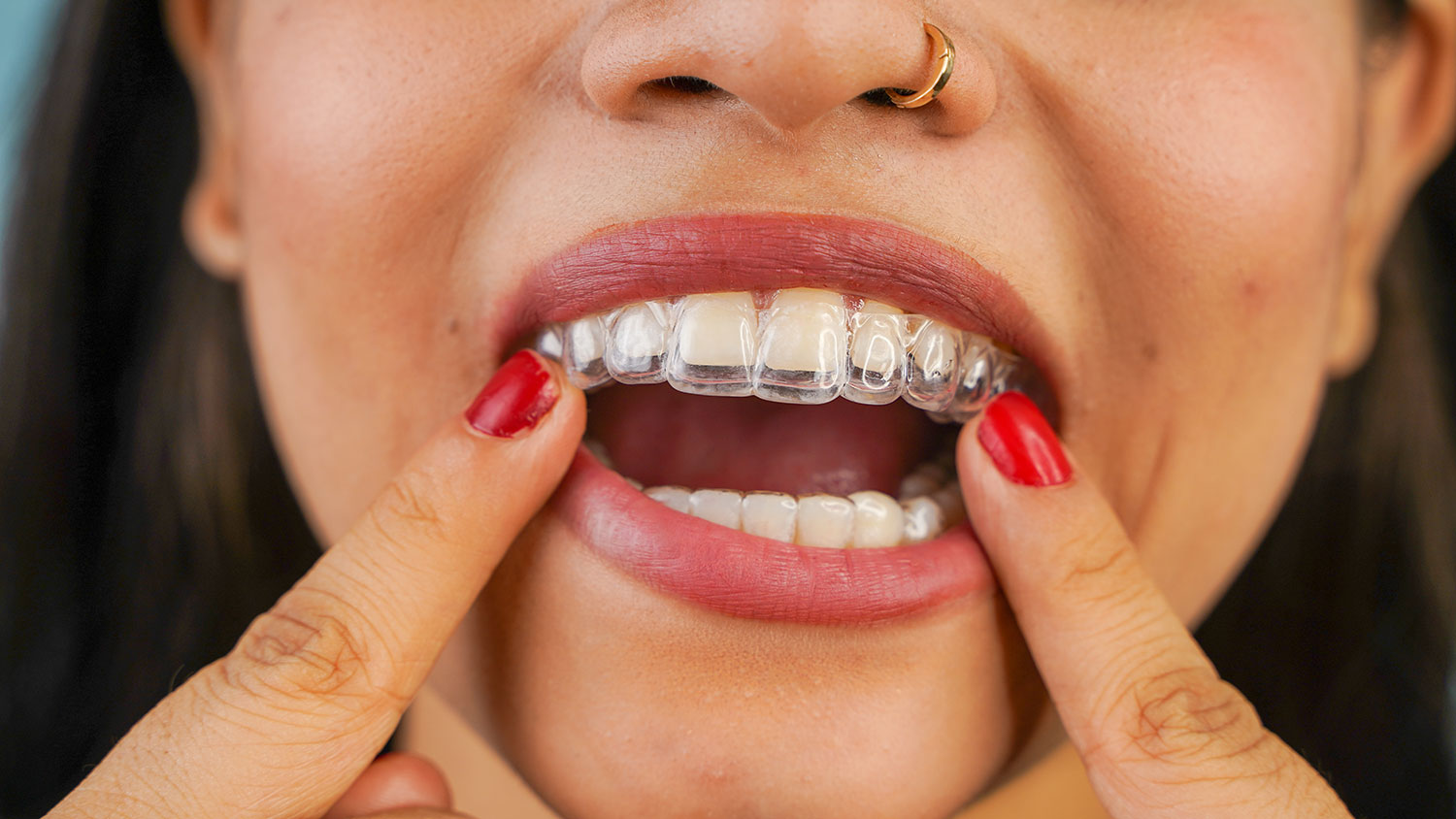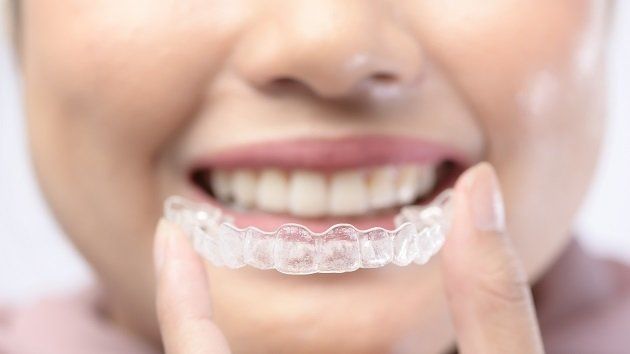Preserving Oral Health While Using Invisalign: Tips for a Smooth Experience
Preserving Oral Health While Using Invisalign: Tips for a Smooth Experience
Blog Article
Invisalign vs. Typical Dental braces: Which Option Is Right for You?
When taking into consideration orthodontic treatment, the option in between Invisalign and typical braces offers numerous important elements that merit cautious assessment. Invisalign offers a discreet alternative with detachable aligners, while standard dental braces provide an extra noticeable yet reliable remedy for extreme imbalance. Each alternative incorporates distinct benefits and disadvantages connected to aesthetic appeals, convenience, treatment period, and price. Comprehending these nuances is vital for making an educated choice that lines up with your individual choices and way of living. The inquiry stays: which choice will finest meet your orthodontic needs and expectations?
Review of Therapy Options

On the other hand, conventional braces contain steel braces and wires that are adhered to the teeth. This method uses constant stress gradually to attain placement. While reliable for complicated orthodontic problems, conventional braces call for routine check outs for changes and can present difficulties in preserving oral health due to the trouble of cleansing about cords and braces.
Both options have their advantages, and the choice frequently rests on specific dental problems, way of living preferences, and individual compliance. Eventually, speaking with an orthodontic expert is crucial for figuring out one of the most ideal treatment strategy customized to specific requirements. Understanding the nuances of each choice can considerably influence the total success of orthodontic treatment.
Visual Factors To Consider
A substantial element affecting the option between Invisalign and standard braces is the visual appeal each therapy uses. Invisalign aligners are crafted from clear plastic, making them practically invisible when used.
On the other hand, typical braces contain steel brackets and cords, which can be a lot more noticeable. While improvements in orthodontic innovation have actually resulted in the development of smaller brackets and colored elastics, conventional braces still maintain an even more conspicuous profile. For some individuals, the exposure of dental braces might discourage them from looking for essential treatment.
Ultimately, the option in between Invisalign and standard dental braces may pivot on personal preferences regarding appearances. Clients that focus on discernment often lean toward Invisalign, while those that are less worried concerning exposure may go with typical dental braces. Comprehending the aesthetic effects of each alternative is critical for making an educated choice that lines up with one's lifestyle and choices.
Convenience and Convenience

In terms of convenience, Invisalign aligners are removable, allowing individuals to appreciate their favorite foods without restriction and maintain optimum dental hygiene. Cleaning and flossing are streamlined, as the aligners can be gotten during these routines, whereas standard braces require mindful navigating around cables and brackets.
In comparison, conventional braces demand regular modifications, making them much less practical for those with active schedules. Generally, the convenience and convenience of Invisalign make it an appealing option for several individuals looking for orthodontic therapy.
Therapy Duration and Performance
While both Invisalign and typical braces are reliable in fixing oral imbalances, the duration of treatment can differ significantly in between the two options. Commonly, Invisalign treatment can take anywhere from 12 to 18 months, relying on the intricacy of the case. The clear aligners work by slowly changing teeth right into their desired positions, and routine follow-ups with an orthodontist assistance ensure progress remains on the right track.
In comparison, typical dental braces typically call for a longer dedication, normally varying from 18 months to 3 years. This is due to their set nature and making use of cables and braces, which can be much more effective for severe imbalances and complicated instances (Invisalign). The therapy effectiveness of conventional braces is well-documented, as they permit for exact changes and better control over tooth movement
Ultimately, the selection between Invisalign and traditional braces may depend upon both the awaited treatment period and the specific oral issues available. Consulting with an orthodontist is important, as they can offer special info tailored referrals based upon private needs, making sure the chosen technique straightens with wanted outcomes and timeframes.
Price Contrast and Insurance Policy Options
Price plays a substantial function in the decision-making process for people considering orthodontic therapy, whether going with Invisalign or traditional braces. Generally, the price of Invisalign varieties from $3,000 to $8,000, while typical braces usually cost between $2,000 and $6,000. Variables affecting these costs consist of the intricacy of the case, the period of treatment, and geographical location.
Insurance policy protection can substantially affect out-of-pocket expenditures. Lots of dental insurance plans give partial protection for orthodontic therapies, but the specifics can differ widely. It is critical for people to examine their insurance policy policies to establish the extent of insurance coverage for either option. Typically, conventional dental braces may be much more often covered by insurance plans contrasted to Invisalign, which some insurance providers classify as an aesthetic procedure.
In addition, a number of orthodontic practices provide versatile repayment strategies, making both therapy alternatives extra available. Clients ought to ask about prospective funding options and discounts for upfront payments. Examining the overall price, consisting of insurance benefits and layaway plan, is important for making an informed decision that aligns with both visual choices anonymous and budget considerations.

Conclusion
In summary, the choice in between Invisalign and conventional dental braces rests on several aspects, including aesthetic preferences, convenience, therapy period, and price. Invisalign offers a very discreet, detachable choice that helps with oral health and nutritional versatility, while conventional braces may be preferable for complex dental issues and typically come with a reduced cost point. Ultimately, examination with an orthodontist is important to go to my site evaluate private conditions and figure out the most suitable treatment alternative for accomplishing optimal dental placement.
When thinking about orthodontic therapy, the selection in between Invisalign and conventional dental braces provides numerous essential factors that warrant mindful evaluation.Contrasting Invisalign and standard dental braces reveals unique treatment alternatives for orthodontic improvement.While both Invisalign and typical braces are reliable in fixing oral misalignments, the period of treatment can vary considerably in between the 2 options.Expense plays a significant role in the decision-making procedure for individuals taking into consideration orthodontic treatment, whether choosing for Invisalign or traditional braces.In recap, the choice between Invisalign and typical braces hinges on numerous elements, consisting of aesthetic choices, comfort, therapy duration, and expense.
Report this page